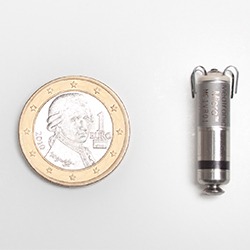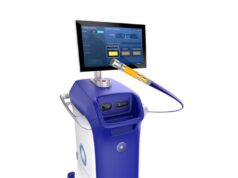
Medtronic has announced clinical results highlighting the safety and performance profile of the miniaturised Micra transcatheter pacing system (TPS) at the Heart Rhythm Society’s 37th Annual Scientific Sessions in San Francisco, USA.
The Micra TPS is less than one-tenth the size of traditional. Data presented the conference underscored the technology’s safety and performance profile, according to a company release. The data also confirmed the Micra’s ability to accurately respond to patients’ activity levels by adjusting therapy using for the first time an accelerometer sensor positioned within the heart.
“Many patients with bradycardia require rate-responsive pacing so that their heart rates increase during exercise,” says Razali Omar, senior consultant cardiologist at the National Heart Institute in Kuala Lumpur, Malaysia. “Conventional pacemakers use various sensors outside the heart to detect patient activity, but even these sensors can have difficulty detecting moderate physical activity. As data presented today show, the Micra accurately responds to patients’ activity levels by adjusting therapy when needed using a sensor within the heart.”
Using an accelerometer, the Micra TPS is designed to determine which pacing rates are appropriate based on patient activity levels. The technology is the first FDA-approved cardiac device to position the sensor inside the heart and the only leadless pacemaker to offer the benefits of accelerometer-based sensing technology, according to the release.
Data presented today at HRS assessed the rate response performance for approximately 20 patients with Micra TPS at three- and six-months post-implant procedure. In the study, patients underwent treadmill tests exercising to maximal exertion. The study found that appropriate rate-responsive pacing is achievable with an entirely intracardiac accelerometer-based pacing system.
Comparable in size to a large vitamin tablet, the Micra TPS is attached to the heart with small tines and delivers electrical impulses that pace the heart through an electrode at the end of the device. Unlike traditional pacemakers, the Micra TPS does not require leads or a surgical “pocket” under the skin, so potential sources of complications related to such leads and pocket may be eliminated-as are any visible signs of the device.
The Micra design incorporates a retrieval feature to enable retrieval when possible; however, the device is designed to be left in the body. For patients who need more than one device, the miniaturised Micra TPS was designed to enable it to be permanently turned off, so that it can remain in the body and a new device can be implanted without risk of electrical interaction.









